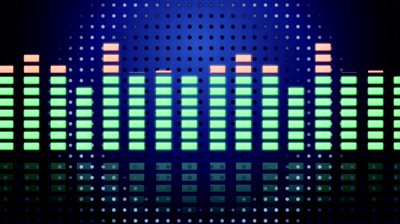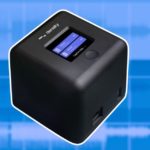
Setting all the volume and gain controls in a DJ set-up correctly is the most important step to getting a good sound out of it, and it never ceases to amaze me how so many DJs – even some of the biggest names on the planet! – are completely unaware of how to do it properly, or worse still, just don’t bother. Yet if you just take time to learn a few simple rules and techniques, every DJ set you play will sound as good as it’s possible for it to. So what is this “gain structure” business anyway, and why is it so important? Let’s take a look…
Put simply, “gain structure” means setting the gain level at each amplifier point in your DJ set-up to get the loudest possible signal without distortion. The reason for doing this is to ensure that the level of the signal is sufficiently higher than the noise generated by the electronic circuits in your set-up, but still lower than the maximum signal the circuits can handle.
This is known as “good signal to noise ratio”, and while digital files and equipment have a much lower noise floor than their analogue counterparts, they are still subject to noise, and digital noise is even nastier than analogue hiss.
Headroom and distortion: Digital vs analogue
I’m not going to debate which is better, as both have their strong and weak points, and I don’t want to get too technical in this article. However, I am going to discuss the differences when it comes to setting gain, as there is a huge difference in the way analogue and digital signals behave when they distort, and when you understand this you will understand why good gain structure is even more important for the digital DJ.

All electronic circuits have a maximum level that they can recreate a signal accurately at. With an analogue circuit the manufacturers will specify an optimum level to set the signal at (0dB) but the maximum level the circuit will be able to handle is higher than this – exactly how much higher will depend on the quality of the equipment. The difference in level between 0dB and the maximum level is known as “headroom”. As the signal gets closer to the maximum level it slowly begins to distort in a somewhat “musical” way, and can be used creatively. (Think guitar distortion and drums recorded to tape at high level).
Digital circuits also have a maximum level that they can recreate, which is known as 0dBFS, and a digital circuit will accurately create the signal up to this level with no distortion. Anything over this level will distort because digital circuits have no Headroom above 0dBFS. Digital distortion is not musical and sounds horrible!
Guide to volume and gain for DJs
OK enough boring theory; let’s get on with setting the gain structure up correctly in your DJ set-up.
The four gain stages in a DJ set-up
Every DJ set-up has four gain stages that need to be set up correctly. These are:
- Input gain – This is the gain knob at the top of your controller’s mixer channel, or in your software’s onscreen mixer. There will be one of these for each channel in your set-up. This gain is used to compensate for the difference in recording levels between the tracks in your collection (on most DJ controllers this gain is actually after the EQ section in the signal path to allow you to also compensate for any EQ settings you had to make to the track)
- Channel output fader – This is the fader under the EQ section of each channel in your setup, and again there will be one of these for each channel
- Master output gain – This gain knob is used to set the level out the signal coming out of the mixer
- Amplifier gain – This is the volume level of the PA amplifier(s), your home hifi, computer speakers, or whatever you’re listening to your mixes on
How to set gain structure correctly on your DJ system
To set up the gain structure of your DJ system, follow the steps below. It is important that you do them in the right order:
- Ensure all the levels in your system are set to infinity (turned right down) and the EQs are all set to their centre positions
- Use the input gain knob to set the level of the track so that the average level of the track is at 0dB (usually the last green LED on the channels input level meter) and the transients (usually the bass drum) peak between +3dB and +6 dB (the orange LEDs on most meters). Never let the levels go into the red.
- Set the channel’s volume fader to maximum (tip: I sometimes leave it a bit lower to let me accent beats by pushing it to max briefly)
- Use the master output gain knob to increase the level of the output signal until the average level of the track is at 0dB (usually the last green LED on the master output level meter) and the transients (usually the bass drum) peak between +3dB and +6 dB (the orange LEDs on most meters). Never let the levels go into the red
- Turn up the gain knobs on the amplifier until the average level of the track is at 0dB (the last green LED on the most amplifiers’ level meters) and the transients (usually the bass drum) peak between +3dB and +6 dB (the orange LEDs on most meters). Never let the levels go into the red. If the amplifier does not have input meters, turn it up until the clip LED just starts to come on with the transients, then turn it down a bit until the clip light stops flashing
Congratulations! You have now set up the correct gain structure of your DJ system, and all you need to do now is adjust the input gain for each track you play to set its level to 0dB. In other words, you do step two above for every track you play.
Frequently asked questions
How do I adjust volume overall once this is all set?
We’ve just set the system up to the loudest it will go, and of course you won’t always want to play at this level. The ideal place to turn things down is the main amplifiers, but if you can’t do it there, the output gain on your DJ controller or mixer is the next best place.
What if it’s not loud enough having done this?
If you do not have enough volume after doing all this, it means you need to get bigger amplifiers and speakers, or more of them. Do not be tempted to turn up the gain at any of the stages stages as all you are doing is introducing distortion, and risking damaging your or the venue’s equipment.

In fact, most venues have compressors or limiters in place to protect their expensive PA equipment so pushing all your gain stages into distortion will not make it any louder, but will make the music sound terrible, and will quickly fatigue the ears of your audience causing them to leave the dancefloor to recover.
What about if I’m plugging my DJ controller through a house mixer?
Same principle applies – set EQs flat in the channel you’re using, set input gain correctly, put the channel output fader on full, and adjust the master output gain correctly.
What about EQ?
When you boost part of the signal with EQ you are increasing the gain of the signal and using up valuable headroom. The biggest culprits of this are the bass frequencies as they require more power to recreate the long wavelengths they produce. Of course it goes without saying that these are the very frequencies DJs love to boost!
Subtractive EQ is a much better way to get a good sound, so next time you are cueing up a track which is lacking in the bottom end, try cutting the mid and high frequencies and turning up the overall gain to bring the track up to 0dB, you will find that the result sounds the same, but you are not driving the signal into distortion.
Finally…
I hope this article has helped you understand the fundamentals of gain and how it relates to DJing. I purposefully didn’t go into too much technical detail, but for those of you out there who want or need to know more just type “gain structure” into Google and enter geek heaven! For those of you who are thinking of producing your own tracks, everything I have explained above also relates to setting levels for each instrument/sound in the track. And while you can of course break all the rules for creative effect, it still helps if you know them in the first place!
• Simon Pentz started DJing in 1992 on a pirate radio station in Dublin, before moving to Melbourne, Australia to study music production in 2003. He teaches a DJ skills short course and also work for one of Melbourne’s best known pro audio companies. He’s a Torq who’s about to switch to Serato ITCH because of the new Twitch controller.
Do you have any questions regarding gain structure and how to set up the volumes on your DJ equipment? Have you got any nightmare stories of DJs messing this up, to the detriment of everyone else in teh venue? Let us know in the comments!








